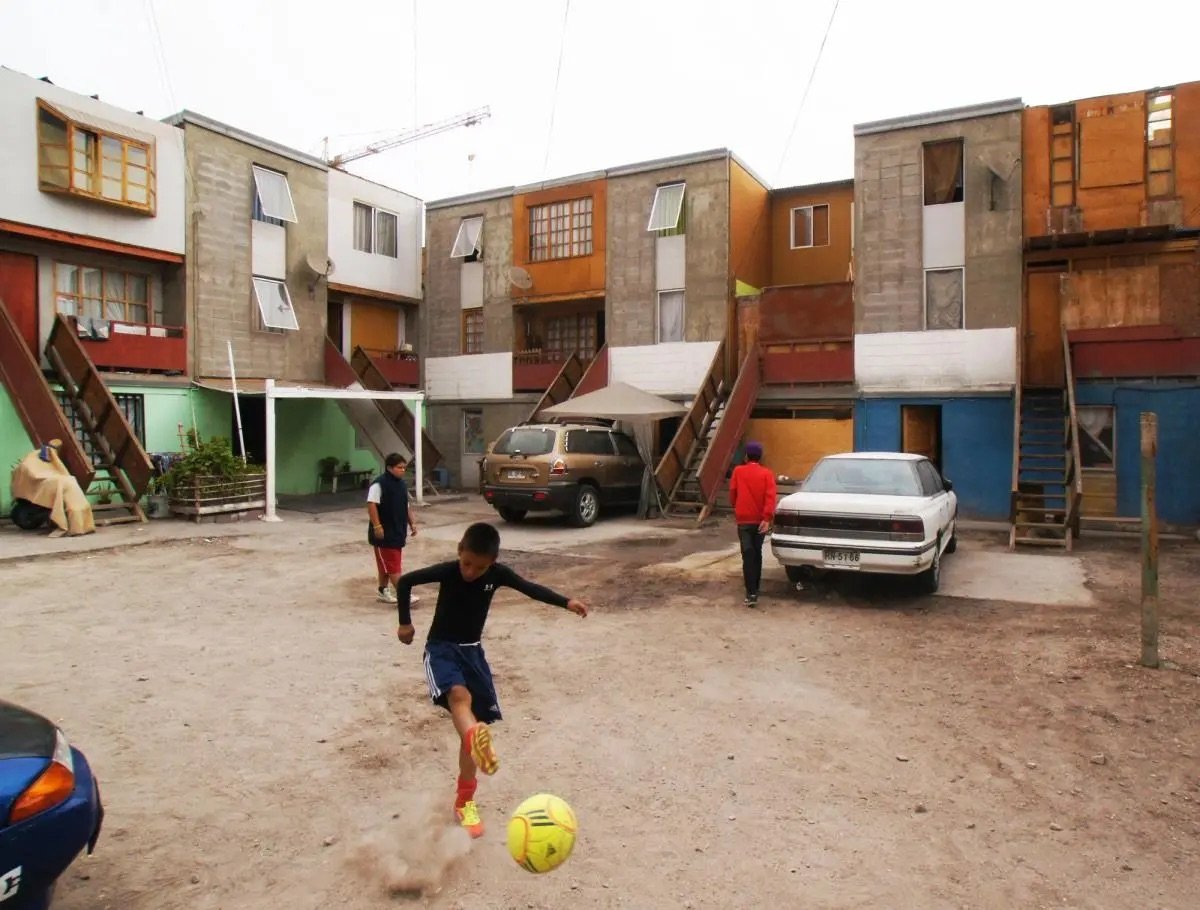TRANSFORM
INTERACTIVE ARCHITECTURE IDEAS COMPETITION
[FORMAT] We are soliciting designs for dollhouse-scale playsets that model interactive architectural systems, what we call “transformable” architecture. Designers are tasked with devising a tabletop toy set with reconfigurable parts. We believe that durable toy-like models that can withstand manipulation by non-experts will best demonstrate the interactive possibilities of the systems that they represent.
DIMENSIONS: ‘Table-top’ playset, between 1 square foot and 1 square yard in size.
SCALE: U.S. dollhouse scale model, 1:12 or 1” = 1’ - 0”
MATERIALS: If possible, more renewable materials like wood and ceramics are preferred over plastics. Think in terms of assemblies that can be scaled up to 1/2 scale or full scale prototypes.
READY-MADE SUBMISSIONS: Designers and students are encouraged to submit well-built and durable architectural models that have already been produced in other contexts (class assignments, etc.) for consideration, as long as they fulfill the requirements listed above.
[PRIZES] Prizes will be awarded to 2 - 6 winning submissions, and entrants and winners will be displayed at the Collective Arts Incubator Design Show during LA Design Weekend September 26 - 29, 2025.
PRIZE / COMMISSION: $1,000 for the first place winner and $750 for other selected entrants, awarded upon delivery of prototype model or design drawings / digital 3d model for production.
MATERIALS BUDGET: $350 - $750 to reimburse expenses for designers making their own models. If the designer prefers, we may be able to have the prototypes fabricated by a 3rd party instead.
[FUTURE] This first iteration of this project is privately funded by KSwick_Collection, and finished exhibition models will be made available for sale to the public at the CAI Design Show. To advance this line of inquiry and invite as many people into the conversation as possible, we plan on pursuing external funding to further develop some or all of the winning entrants into the following:
TOY SETS: If the design concept or prototype is durable and scalable enough, we may seek funding for larger scale fabrication. Designers would receive compensation commensurate with standard licensing agreements from design-toy makers (like Areaware).
HALF OR FULL SCALE SECTION PROTOTYPE: Although entrants will not be judged on their real-world buildability at scale, we hope to mock up innovative systems if funding can be secured.
[TIMELINE] TRANSFORM 2025 will taking place from May through September 2025, culminating in an exhibition at the CAI Design Show for LA Design Weekend:
May 2025: Competition Announced
July - August 2025: Submissions Accepted
August 31st, 2025: Submission Deadline
September 26 - 29, 2025: Exhibition of Entrants and Winners at CAI Design Show during LA Design Weekend
[JUDGING CRITERIA] Although the ultimate goal of this competition is to gather and promote full-scale interactive architectural systems, submissions will be judged as design proposals for toylike tabletop scale models. Submissions should prioritize craft, design, and reconfigurability.
[SUBMISSION FORMAT] Submissions consist of the following:
Statement of design intent
Representations of the design proposal, which can include:
Design or specification drawings
3D renderings or drawings
Product design diagrams
3D digital model (3D PDF or other)
Portfolios and/or web links to work samples (not required, but preferred)
All submission materials should be compiled into a single PDF in the order listed above.
[PURPOSE] We propose that transformable architectures may be able to meet the challenges that we face as we confront overlapping crises amid unprecedented uncertainty:
HOUSING SHORTAGES & AFFORDABILITY
Zoning and other anti-development regulation, local resistance to densification (NIMBY-ism), increasing labor and material costs, dramatically reduced public investment in both public housing and private housing vouchers, natural disasters and skyrocketing insurance costs, and numerous other issues have made housing increasingly scarce and expensive.
Interactive architecture may better accommodate changing housing needs and patterns. Shared and/or flexible indoor or outdoor spaces can serve multiple functions and remain responsive to the changing needs of the community.
ENVIRONMENTAL DEGRADATION & CLIMATE CHANGE
Climate change and the over-development of areas prone to natural disaster have rendered our buildings vulnerable to catastrophe. The construction industry produces both immense greenhouse gas emissions and waste, much of which is toxic. Buildings are too often torn down instead of creatively repurposed via adaptive reuse.
Interactive architecture may be able to adapt to the rapidly changing climate with more agility and less waste. Architecture must be both more adaptive to change and resilient to weather damage and natural disaster.
DEHUMANIZATION & DEPERSONALIZATION OF DWELLINGS
The commodification of buildings has given rise to increasingly monotonous boxy apartment buildings and sprawling tract home developments. The personal process of ‘dwelling’ has been interrupted in favor of mass standardization. Occupants are thereby disincentivized from taking ownership of their spaces and caring for them.
Interactive architecture enables a more active process of ‘dwelling,’ inviting occupants and other stakeholders to take a larger role in shaping their built environments. Beyond enabling greater personalization, interactive architecture can make our cities more reflective of their inhabitants’ values and identities.
[FULL-SCALE EXAMPLES] Interactive architectural systems can operate across multiple scales. Provided here is a brief and non-exhaustive introduction to examples of full-scale interactive architectural systems, arranged according to this rudimentary scalar spectrum:
BUILDING COMPONENTS:
Supports:Infills or The Use of Levels by N. John Habraken
Three levels in the built environment, The Use of Levels (https://www.habraken.com/html/downloads/the_uses_of_levels.pdf)
“N. John Habraken advocates a clear distinction of the support and the infill and emphasizes that this is not only technical in nature, but more importantly focused on the ability to facilitate personal influence.
The supports are part of the public domain and permanent, while the infill belongs to the individual owner/user and is changeable. Participation and freedom of choice for the user is the key objective.
Open Building redesigns ownership scenarios, (design-)responsibilities and building engineering. It offers participation and co-creation of inhabitants and users, on the private.”
-openbuilding.co
BUILDING SECTIONS:
Incremental Architecture or Half-Houses by Elemental
Quinta Monroy Housing Project in Iquique, Chile (https://www.elementalchile.cl/works/iquique-violeta-parra-ex-quinta-monroy?slide=3)
“When there is no time nor money to deliver everything on Day 1, use incremental design as an antidote against scarcity: an open system that can achieve over time the required standard that emergency and scarce resources prevent from acquiring.”
-Elemental
“The project, says Elemental’s leader Alejandro Aravena, put into practice his belief that “architects design nouns – windows, ceilings, floors – but these nouns come from verbs which are life itself. Looking, eating, meeting. We should be looking at both nouns and verbs.” The Iquique project, he says, was ultimately less about providing the noun of shelter than “giving tools to escape poverty”.
What Aravena hoped for happened, and the architects’ plain concrete cuboids rapidly became augmented by infill of multiple colours, materials and window types that reflected the different skills and moods of the inhabitants, and the different means available to them.”
-The Guardian
PARTICIPATORY DESIGN:
Atelier D’Architecture Autogérée (Studio for Self-Managed Architecture)
R-Urban Agrocite Colombes (more info: https://www.urbantactics.org/projets/agrocite/)
“aaa acts through ‘urban tactics’, encouraging the participation of inhabitants at the self-management of disused urban spaces, overpassing contradictions and stereotypes by proposing nomad and reversible projects, initiating interstitial practices which explore the potential of contemporary city (in terms of population, mobility, temporality).
It is by micro-political acting that we want to participate in making the city more ecological and more democratic, to make the space of proximity less dependent on top-down processes and more accessible to its users. The ‘self-managed architecture’ is an architecture of relationships, processes and agencies of persons, desires, skills and know-hows. Such an architecture does not correspond to a liberal practice but asks for new forms of association and collaboration, based on exchange and reciprocity and involving all those interested (individuals, organisations, institutions), whatever is their scale.
Our architecture is at the same time political and poetic as it aims above all to ‘create relationships between worlds’.”
-AAA
Icon Images from the Noun Project
REFERENCES
Interactive architecture and other associated concepts have been explored more in academic and experimental circles than in practice. It is understandably difficult to devise of buildings systems that are both resilient and reconfigurable, sturdy but also interactive.
Below are some resources describing examples of interactive architecture in theory and in practice. Many are self-organized, organically emerging within local communities confronting changes in their own cities. Fewer, perhaps, are facilitated or ‘designed.’
[BOOKS & ARTICLES] These references are provided for inspiration, and are not “required reads:”
“Alejandro Aravena: The Shape of Things to Come.” The Guardian, Guardian News and Media, 10 Apr. 2016, www.theguardian.com/artanddesign/2016/apr/10/architect-alejandro-aravena-pritzker-prize-elemental-housing-iquique-constitucion-tsunami-defences.
Aravena, Alejandro, and Michael Juul Holm. Alejandro Aravena – Elemental the Architect’s Studio. Müller, Lars, 2018.
Awan, Nishat, et al. Spatial Agency: Other Ways of Doing Architecture. Routledge, 2011.
Blundell Jones, Peter, et al. Architecture and Participation. Taylor and Francis, 2013.
Calvo, Mirian, et al. “Strategies and tactics of participatory architecture.” Proceedings of DRS, 25 June 2022, https://doi.org/10.21606/drs.2022.458.
Frenkiel, Émilie. « For a participatory Architecture. Interview with Peter Ferretto », Books and Ideas , 21 March 2025, https://booksandideas.net/For-a-participatory-Architecture-6487.
Frichot, Hélène, and Stephen Loo. Deleuze and Architecture. Edinburgh University Press, 2013.
Habraken, N. J., and Jonathan Teicher. Supports: An Alternative to Mass Housing. Urban International Press, 2011.
Kossak, Florian. Agency: Working with Uncertain Architectures. Routledge, 2010.
“Legacy of Open Building.” Open Building, www.openbuilding.co/legacy?utm_medium=website&utm_source=archdaily.com.
Widrich, Mechtild, and Martino Stierli. Participation in Art and Architecture: Spaces of Interaction and Occupation. I. B. Tauris & Company, Limited, 2015.
Petrescu, Doina, and Kim Trogal. The Social (Re)Production of Architecture: Politics, Values and Actions in Contemporary Practice. Routledge, Taylor & Francis Group, 2017.
Petrescu, Doina and Tyszczuk, Renata, eds. Field Journal: Architecture & Indeterminacy, vol. 1, no. 1, 2007 (AVAILABLE HERE).
“Spatial Agency: Database.” Spatial Agency, www.spatialagency.net/database/.
Vasudevan, Alex. The Autonomous City: A History of Urban Squatting. Verso, 2013.
[AREAS OF INQUIRY] Here are some buzzwords around interactive architecture:
Participatory Architecture
Open Architecture
Co-Design
Social Practice
Agency
Rhizomatic
Modularity
Component Design
Adaptive Design
Kinetic Architecture
Responsive Architecture
Interactive Architecture
Indeterminate Architecture
Uncertain Architectures
We are hoping to compile more resources around interactive architecture. Please feel encouraged to share your comments, questions, and recommendations.



















